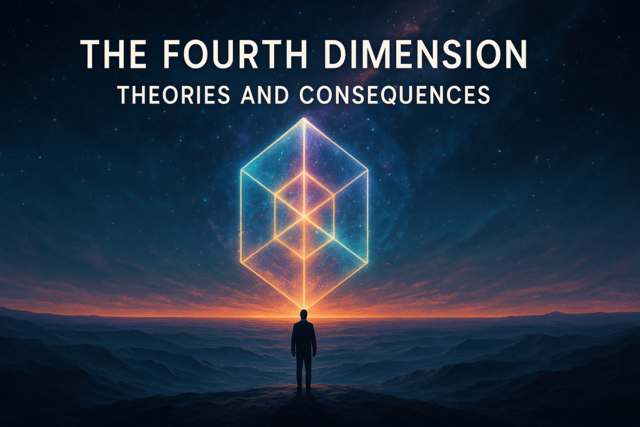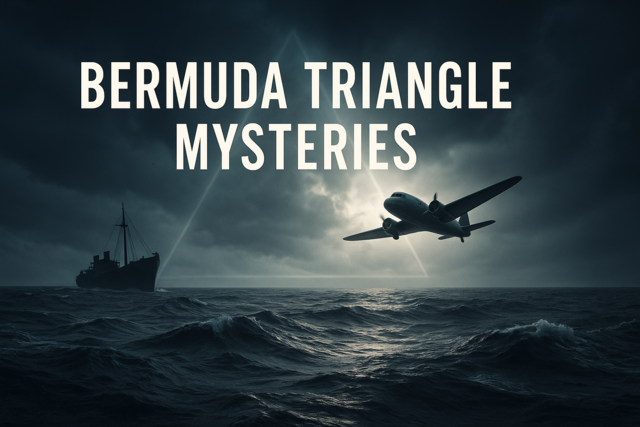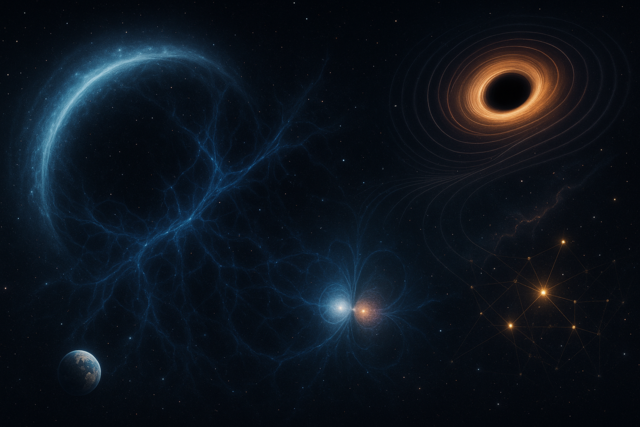Online Class: The Science of Miracles — When Logic Defies Understanding

-
15Lessons
-
22Exams &
Assignments -
7Hours
average time -
0.7CEUs
Course Description
Welcome to "The Science of Miracles: When Logic Defies Understanding"—a transformative journey that will change how you perceive reality, challenge your assumptions, and expand your horizons. This extraordinary course invites you on an intellectual and spiritual adventure where the boundaries between the rational and the miraculous blur, and where scientific marvels and age-old beliefs dance in harmony.
Imagine a world where every discovery, from the tiniest microbe to the vast cosmos, holds the potential to inspire awe and wonder. In this course, you will step into that world, exploring how serendipitous breakthroughs—like the discovery of penicillin or the cosmic microwave background radiation—reveal the profound mysteries of existence that border on the miraculous. These are not just historical anecdotes; they are testaments to humanity's relentless curiosity and the unexpected elegance of nature's design.
The course then invites you to delve into the rich tapestry of miracles across cultures, where faith and reason intertwine in stories that have shaped civilizations. Consider how miraculous events, so deeply woven into the mythos of religious traditions, challenge the very foundations of rational thought yet offer solace and inspiration in the midst of uncertainty. Here, miracles are not merely seen as divine anomalies but as a vital force that binds communities, transcending geographic and cultural boundaries.
As we journey further, you'll find yourself pondering the wondrous realm of quantum mechanics—an almost mystical dimension of science where multiverses and entanglement defy our conventional understanding of reality. You will see how these phenomena hint at the miraculous within the fabric of the universe itself, propelling innovation in fields like cybersecurity and agriculture and redefining what we perceive as possible.
But this course doesn't stop there. It explores the enigmatic intersections where science meets spirituality, particularly in the realm of medical miracles. Can unexplained healings be rationalized by medical science, or do they transcend the realm of empirical inquiry? As both skeptic and believer, you will grapple with these intriguing questions, learning to appreciate the nuances that accompany tales of miraculous recovery.
Cultural narratives of miracles are also under our lens, serving not only as moral compasses but as essential binding elements among societies. You'll gain an appreciation for how these stories, passed through generations, have become emblematic of resilience and cultural identity, reflecting a shared human fascination with the extraordinary.
Furthermore, the course guides you through the philosophical corridors opened by near-death experiences and the intuitive leaps that defy logical understanding yet enrich our lives. Engaging with these concepts ignites a path to deeper insight, fostering an enriched creative and empathetic existence.
In this course, we embrace the dialogue between science and religion, rather than viewing them as adversaries. You'll explore how interdisciplinary approaches can enhance well-being and understanding, highlighting how shared experiences, like synchronized rituals, foster community and collective belief.
"The Science of Miracles: When Logic Defies Understanding" is not just an academic course; it is a gateway to transforming your perspective. By enrolling, you will not only gain profound academic knowledge but also enrich your inner world with the wonder and wisdom that transcends conventional logic and time.
Join us and embark on this journey of discovery, innovation, and inspiration tailored just for those who dare to see the world not just as it is, but as it could be—a place where miracles reside in the tapestry of everyday life, waiting to be understood and appreciated. Don't hesitate—take this bold step towards a deeper, more meaningful understanding of the universe and your place within it. Are you ready to redefine what's possible? Let's unlock the science of miracles together.
- Business
- Business Ethics Courses
- Harassment Prevention Courses
- Human Resources Certifications
- Management
- Aromatherapy Courses
- Caregiver Courses
- Career Development Courses
- Communications Courses
- Confidence and Self Esteem Courses
- Healing
- Human Anatomy Courses
- Medical Skills
- Health & Medicine
- Nutrition
- Marketing
- Microsoft Office Certification Courses
- Life Coaching Courses
- Self-Improvement
- Small Business Certifications
- Safety
- Writing Improvement
- Business Writing Courses
Course Lessons
Lesson 1. Miracles and the Scientific Evolution
 Review Practice Worksheet: Lesson-1-Downloadable-17428.pdf
Review Practice Worksheet: Lesson-1-Downloadable-17428.pdf Lesson discussions: Reasons for Taking this Course
Lesson discussions: Reasons for Taking this Course Complete Assignment: Why this Course?
Complete Assignment: Why this Course? Assessment: Lesson 1 Review Exam
Assessment: Lesson 1 Review Exam
Lesson 2. The Dance of Faith and Reason: Miracles Across Cultures
 Review Practice Worksheet: Lesson-2-HomeWork-17429.pdf
Review Practice Worksheet: Lesson-2-HomeWork-17429.pdf Complete: Lesson 2 Activity
Complete: Lesson 2 Activity Assessment: Lesson 2 Review Exam
Assessment: Lesson 2 Review Exam
Lesson 3. Exploring the Wondrous Interplay of Faith and Logic
 Review Practice Worksheet: Lesson-3-WorkSheet-17431.pdf
Review Practice Worksheet: Lesson-3-WorkSheet-17431.pdf Complete: Lesson 3 Activity
Complete: Lesson 3 Activity Assessment: Lesson 3 Review Exam
Assessment: Lesson 3 Review Exam
Lesson 4. Exploring the Infinite Realms of Quantum Mechanics: Multiverse, Entanglement, and Beyond
 Review Practice Worksheet: Lesson-4-HomeWork-17433.pdf
Review Practice Worksheet: Lesson-4-HomeWork-17433.pdf Complete: Lesson 4 Activity
Complete: Lesson 4 Activity Assessment: Lesson 4 Review Exam
Assessment: Lesson 4 Review Exam
Lesson 5. Exploring the Miraculous: The Intersection of Faith and Perception
 Review Practice Worksheet: Lesson-5-Activity-17436.pdf
Review Practice Worksheet: Lesson-5-Activity-17436.pdf Assessment: Lesson 5 Review Exam
Assessment: Lesson 5 Review Exam
Lesson 6. The Enigma of Medical Miracles: Science Meets Spirituality
 Review Practice Worksheet: Lesson-6-Downloadable-17439.pdf
Review Practice Worksheet: Lesson-6-Downloadable-17439.pdf Complete: Lesson 6 Activity
Complete: Lesson 6 Activity Assessment: Lesson 6 Review Exam
Assessment: Lesson 6 Review Exam
Lesson 7. Miracles Through Sociology: Defying Logic, Defining Culture
 Review Practice Worksheet: Lesson-7-WorkSheet-17442.pdf
Review Practice Worksheet: Lesson-7-WorkSheet-17442.pdf Assessment: Lesson 7 Review Exam
Assessment: Lesson 7 Review Exam
Lesson 8. Unraveling the Mysteries of Near-Death Experiences
 Review Practice Worksheet: Lesson-8-Downloadable-17445.pdf
Review Practice Worksheet: Lesson-8-Downloadable-17445.pdf Complete: Lesson 8 Activity
Complete: Lesson 8 Activity Assessment: Lesson 8 Review Exam
Assessment: Lesson 8 Review Exam
Lesson 9. The Cultural Tapestry of Miracles: Understanding Global Perspectives
 Review Practice Worksheet: Lesson-9-WorkSheet-17449.pdf
Review Practice Worksheet: Lesson-9-WorkSheet-17449.pdf Assessment: Lesson 9 Review Exam
Assessment: Lesson 9 Review Exam
Lesson 10. Intuition Unveiled: An Intrinsic Perception Defying Logic
 Review Practice Worksheet: Lesson-10-WorkSheet-17452.pdf
Review Practice Worksheet: Lesson-10-WorkSheet-17452.pdf Assessment: Lesson 10 Review Exam
Assessment: Lesson 10 Review Exam
Lesson 11. Decoding the Sacred: Science, Religion, and Miracles
 Review Practice Worksheet: Lesson-11-Downloadable-17455.pdf
Review Practice Worksheet: Lesson-11-Downloadable-17455.pdf Assessment: Lesson 11 Review Exam
Assessment: Lesson 11 Review Exam
Lesson 12. Exploring the Cognitive Foundations of Miraculous Phenomena
 Review Practice Worksheet: Lesson-12-Downloadable-17458.pdf
Review Practice Worksheet: Lesson-12-Downloadable-17458.pdf Complete: Lesson 12 Activity
Complete: Lesson 12 Activity Assessment: Lesson 12 Review Exam
Assessment: Lesson 12 Review Exam
Lesson 13. Nature's Paradoxes: Enigmatic Environmental Wonders
 Review Practice Worksheet: Lesson-13-HomeWork-17461.pdf
Review Practice Worksheet: Lesson-13-HomeWork-17461.pdf Assessment: Lesson 13 Review Exam
Assessment: Lesson 13 Review Exam
Lesson 14. Understanding Miracle Claims: A Comprehensive Guide
 Review Practice Worksheet: Lesson-14-Activity-17464.pdf
Review Practice Worksheet: Lesson-14-Activity-17464.pdf Assessment: Lesson 14 Review Exam
Assessment: Lesson 14 Review Exam
Lesson 15. Scientific Miracles: Bridging the Past, Present, and Future
 Review Practice Worksheet: Lesson-15-Activity-17467.pdf
Review Practice Worksheet: Lesson-15-Activity-17467.pdf Lesson discussions: End of Course Poll; Course Comments
Lesson discussions: End of Course Poll; Course Comments Assessment: Lesson 15 Review Exam
Assessment: Lesson 15 Review Exam
Learning Outcomes
- Analyze the impact of the Enlightenment on the perception of miracles as violations or misunderstandings of natural laws, referencing the contributions of David Hume.
- Define the philosophical perspectives of ancient Greece regarding the coexistence of science and miracles, using examples from Aristotle's work.
- Analyze the changing relationship between miracles and scientific understanding across different historical periods, demonstrating how this evolution influences contemporary perspectives on faith and reason.
- Define the perspectives of miracles within Christianity, Islam, and Hinduism and evaluate how these beliefs shape cultural narratives and personal inspiration.
- Analyze and distinguish how scientific inquiry and spiritual belief intersect to influence understandings of miraculous phenomena.
- Demonstrate an understanding of the cultural, scientific, and personal perspectives on miracles by analyzing real-world examples and their impact on communities.
- Describe the role of belief systems in shaping individual and collective interpretations of miraculous events, using specific case studies for illustration.
- Recognize and explain the role of cultural narratives in shaping perceptions of miracles and belief systems.
- Define the concept of quantum superposition and its role in the formation of parallel universes according to quantum mechanics.
- Demonstrate the practical applications of quantum entanglement in advancing cryptography and secure communications technology.
- Define confirmation bias and explain its role in interpreting miraculous events by analyzing case studies of personal experiences.
- Identify and give examples of how emotions influence perceptions of miraculous events, by reflecting on personal and cultural narratives.
- Define the concept of unexplained healings through historical and modern examples, emphasizing the roles of both scientific inquiry and spiritual belief.
- Demonstrate mastery of lesson content at levels of 70% or higher.
Additional Course Information
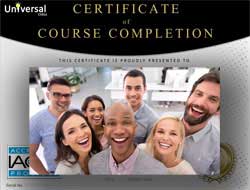
- Document Your Lifelong Learning Achievements
- Earn an Official Certificate Documenting Course Hours and CEUs
- Verify Your Certificate with a Unique Serial Number Online
- View and Share Your Certificate Online or Download/Print as PDF
- Display Your Certificate on Your Resume and Promote Your Achievements Using Social Media

Related Courses
-
 6 hours
0.6 CEUs
Improving Emotional Intelligence
+ More Info
6 hours
0.6 CEUs
Improving Emotional Intelligence
+ More Info
-
 6 hours
0.6 CEUs
The New Chic: Redefining Urban Elegance
+ More Info
6 hours
0.6 CEUs
The New Chic: Redefining Urban Elegance
+ More Info
-
 6 hours
0.6 CEUs
Leadership Skills for Instructional Coaches
+ More Info
6 hours
0.6 CEUs
Leadership Skills for Instructional Coaches
+ More Info
-
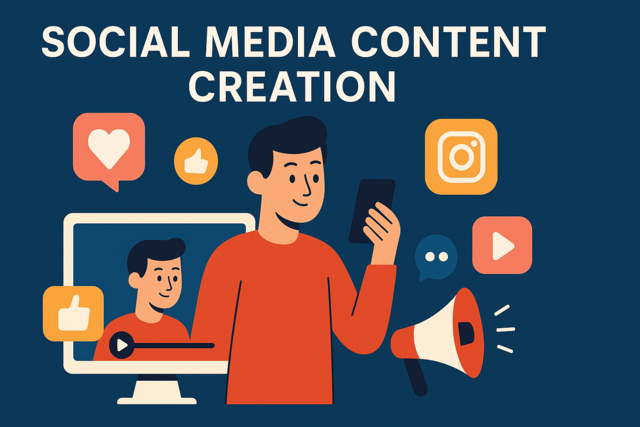 3 hours
0.3 CEUs
Social Media Content Creation
+ More Info
3 hours
0.3 CEUs
Social Media Content Creation
+ More Info
-
 3 hours
0.3 CEUs
Career Resilience and Adaptability
+ More Info
3 hours
0.3 CEUs
Career Resilience and Adaptability
+ More Info
-
 3 hours
0.3 CEUs
Self-Regulation Strategies for Students with Disabilities
+ More Info
3 hours
0.3 CEUs
Self-Regulation Strategies for Students with Disabilities
+ More Info
-
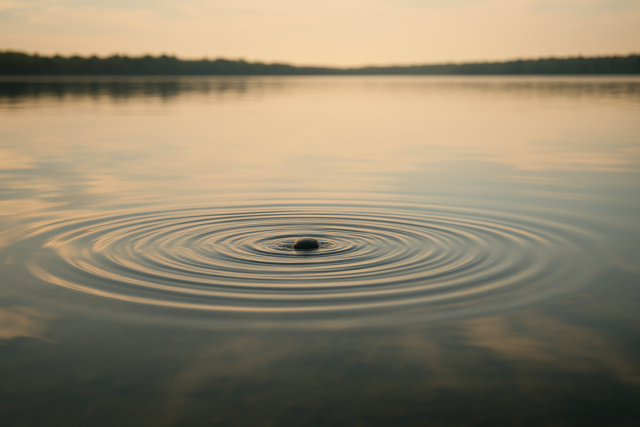 6 hours
0.6 CEUs
Legacy Building: Creating a Family Culture to Last
+ More Info
6 hours
0.6 CEUs
Legacy Building: Creating a Family Culture to Last
+ More Info
-
 7 hours
0.7 CEUs
Negotiation and Persuasion in Business
+ More Info
7 hours
0.7 CEUs
Negotiation and Persuasion in Business
+ More Info
-
 3 hours
0.3 CEUs
Customer Service Excellence
+ More Info
3 hours
0.3 CEUs
Customer Service Excellence
+ More Info
-
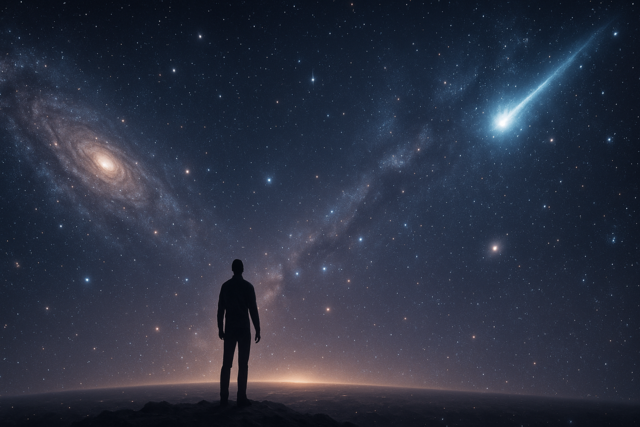 6 hours
0.6 CEUs
Mysterious Forces in the Cosmos
+ More Info
6 hours
0.6 CEUs
Mysterious Forces in the Cosmos
+ More Info
-
 4 hours
0.4 CEUs
Collaboration Skills for Special Education Teams
+ More Info
4 hours
0.4 CEUs
Collaboration Skills for Special Education Teams
+ More Info
-
 7 hours
0.7 CEUs
Effective Communication for the Workplace
+ More Info
7 hours
0.7 CEUs
Effective Communication for the Workplace
+ More Info
-
 6 hours
0.6 CEUs
Sustainable Practices in Business
+ More Info
6 hours
0.6 CEUs
Sustainable Practices in Business
+ More Info
-
 7 hours
0.7 CEUs
Parenting Partnerships: Collaborative Family Leadership
+ More Info
7 hours
0.7 CEUs
Parenting Partnerships: Collaborative Family Leadership
+ More Info
-
 6 hours
0.6 CEUs
Supporting Students with Special Needs
+ More Info
6 hours
0.6 CEUs
Supporting Students with Special Needs
+ More Info
-
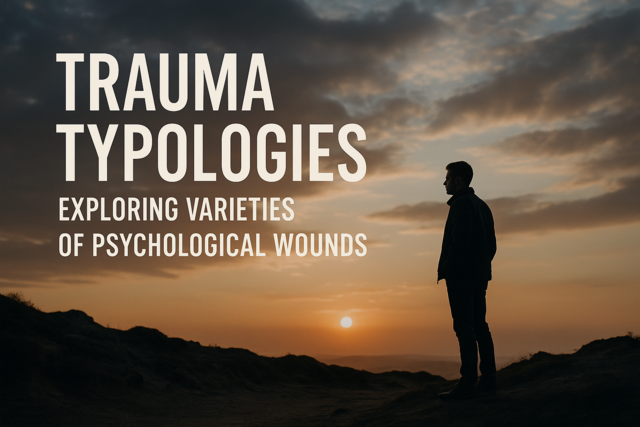 7 hours
0.7 CEUs
Trauma Typologies: Exploring Varieties of Psychological Wounds
+ More Info
7 hours
0.7 CEUs
Trauma Typologies: Exploring Varieties of Psychological Wounds
+ More Info
-
 3 hours
0.3 CEUs
Family Dynamics Decoded: Understanding & Improving Interactions
+ More Info
3 hours
0.3 CEUs
Family Dynamics Decoded: Understanding & Improving Interactions
+ More Info
-
 7 hours
0.7 CEUs
Building Community and Social Engagement
+ More Info
7 hours
0.7 CEUs
Building Community and Social Engagement
+ More Info
-
 3 hours
0.3 CEUs
Leadership in Love: Fostering Growth in Family Relations
+ More Info
3 hours
0.3 CEUs
Leadership in Love: Fostering Growth in Family Relations
+ More Info
-
 7 hours
0.7 CEUs
Effective Minute-Taking for Meetings
+ More Info
7 hours
0.7 CEUs
Effective Minute-Taking for Meetings
+ More Info
-
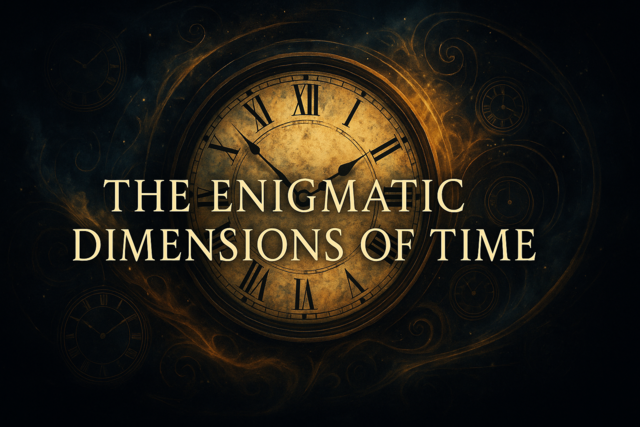 5 hours
0.5 CEUs
The Enigmatic Dimensions of Time
+ More Info
5 hours
0.5 CEUs
The Enigmatic Dimensions of Time
+ More Info
-
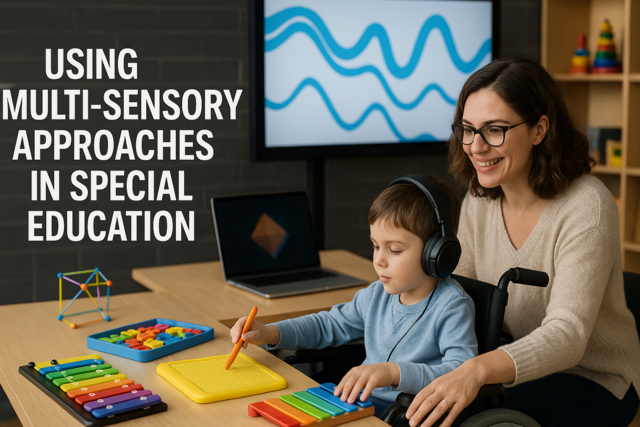 7 hours
0.7 CEUs
Using Multi-Sensory Approaches in Special Education
+ More Info
7 hours
0.7 CEUs
Using Multi-Sensory Approaches in Special Education
+ More Info
-
 5 hours
0.5 CEUs
Boosting Productivity with Effective Email Management
+ More Info
5 hours
0.5 CEUs
Boosting Productivity with Effective Email Management
+ More Info
-
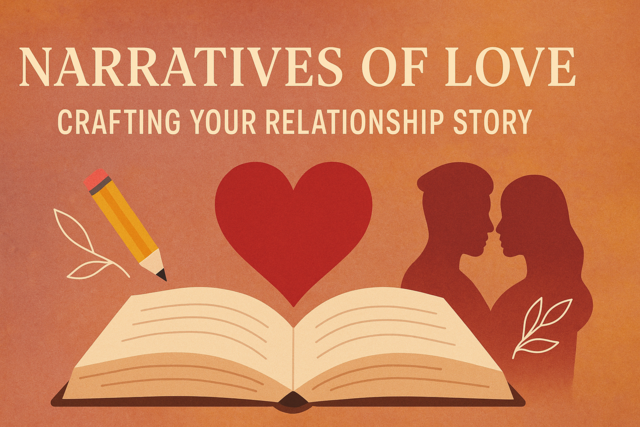 4 hours
0.4 CEUs
Narratives of Love: Crafting Your Relationship Story
+ More Info
4 hours
0.4 CEUs
Narratives of Love: Crafting Your Relationship Story
+ More Info
-
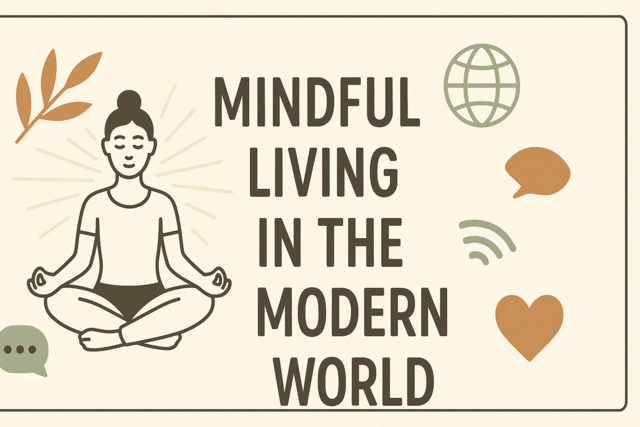 7 hours
0.7 CEUs
Mindful Living in the Modern World
+ More Info
7 hours
0.7 CEUs
Mindful Living in the Modern World
+ More Info
-
 7 hours
0.7 CEUs
Travel Planning and Safety Skills
+ More Info
7 hours
0.7 CEUs
Travel Planning and Safety Skills
+ More Info
-
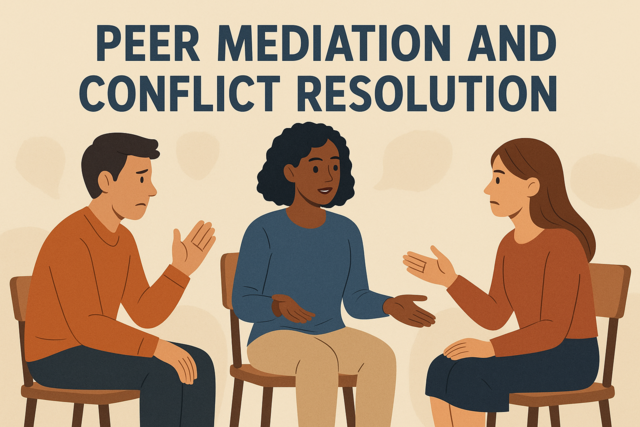 6 hours
0.6 CEUs
Peer Mediation and Conflict Resolution
+ More Info
6 hours
0.6 CEUs
Peer Mediation and Conflict Resolution
+ More Info
-
 7 hours
0.7 CEUs
Promoting Independence and Life Skills
+ More Info
7 hours
0.7 CEUs
Promoting Independence and Life Skills
+ More Info
-
 3 hours
0.3 CEUs
Creating and Maintaining Personal Boundaries
+ More Info
3 hours
0.3 CEUs
Creating and Maintaining Personal Boundaries
+ More Info
-
 6 hours
0.6 CEUs
Classroom Management for New Teachers
+ More Info
6 hours
0.6 CEUs
Classroom Management for New Teachers
+ More Info
-
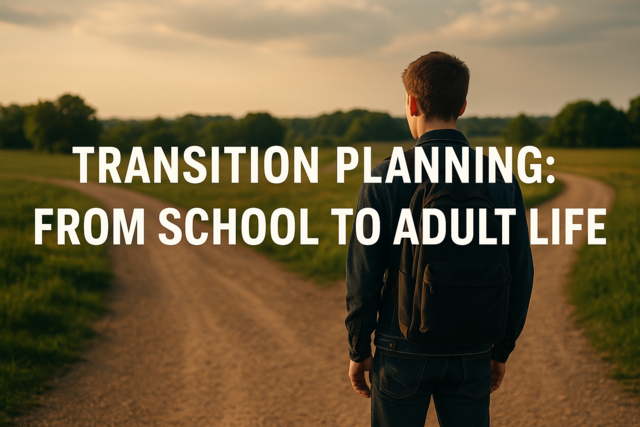 6 hours
0.6 CEUs
Transition Planning: From School to Adult Life
+ More Info
6 hours
0.6 CEUs
Transition Planning: From School to Adult Life
+ More Info
-
 4 hours
0.4 CEUs
Innovative Curriculum Design for the 21st Century
+ More Info
4 hours
0.4 CEUs
Innovative Curriculum Design for the 21st Century
+ More Info
-
 4 hours
0.4 CEUs
The Giving Relationship: Balancing Support and Independence
+ More Info
4 hours
0.4 CEUs
The Giving Relationship: Balancing Support and Independence
+ More Info
-
 5 hours
0.5 CEUs
Advanced Communication Skills for the Workplace
+ More Info
5 hours
0.5 CEUs
Advanced Communication Skills for the Workplace
+ More Info
-
 7 hours
0.7 CEUs
Iconoclasts of Style: Revolutionary Figures in Modern Fashion
+ More Info
7 hours
0.7 CEUs
Iconoclasts of Style: Revolutionary Figures in Modern Fashion
+ More Info
-
 4 hours
0.4 CEUs
Creating a Culture of Collaboration
+ More Info
4 hours
0.4 CEUs
Creating a Culture of Collaboration
+ More Info
-
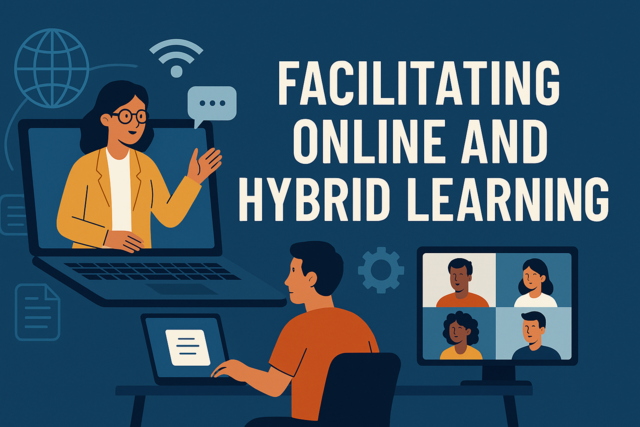 4 hours
0.4 CEUs
Facilitating Online and Hybrid Learning
+ More Info
4 hours
0.4 CEUs
Facilitating Online and Hybrid Learning
+ More Info
-
 7 hours
0.7 CEUs
Research Frontiers: Contemporary Studies in Trauma and Recovery
+ More Info
7 hours
0.7 CEUs
Research Frontiers: Contemporary Studies in Trauma and Recovery
+ More Info
-
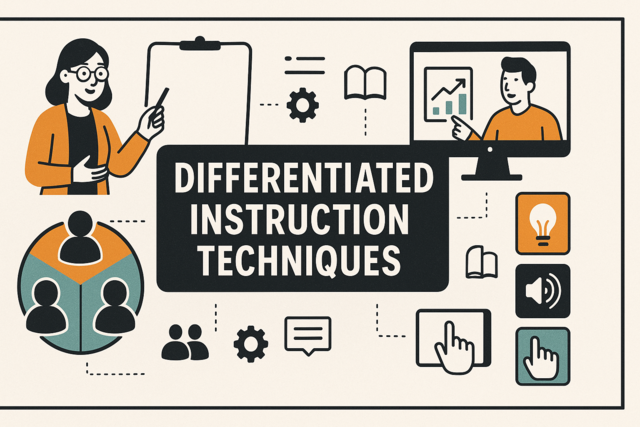 6 hours
0.6 CEUs
Differentiated Instruction Techniques
+ More Info
6 hours
0.6 CEUs
Differentiated Instruction Techniques
+ More Info
-
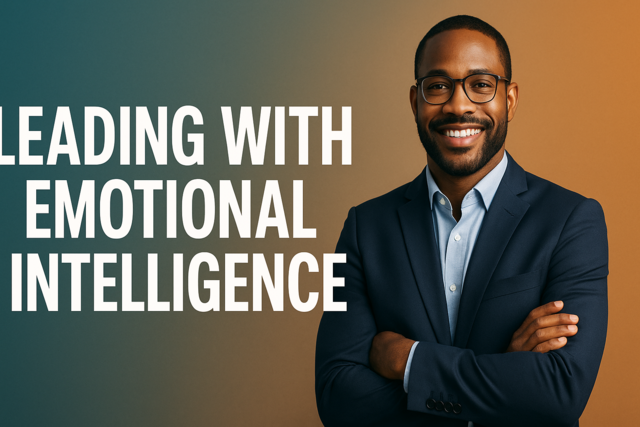 4 hours
0.4 CEUs
Leading with Emotional Intelligence
+ More Info
4 hours
0.4 CEUs
Leading with Emotional Intelligence
+ More Info


